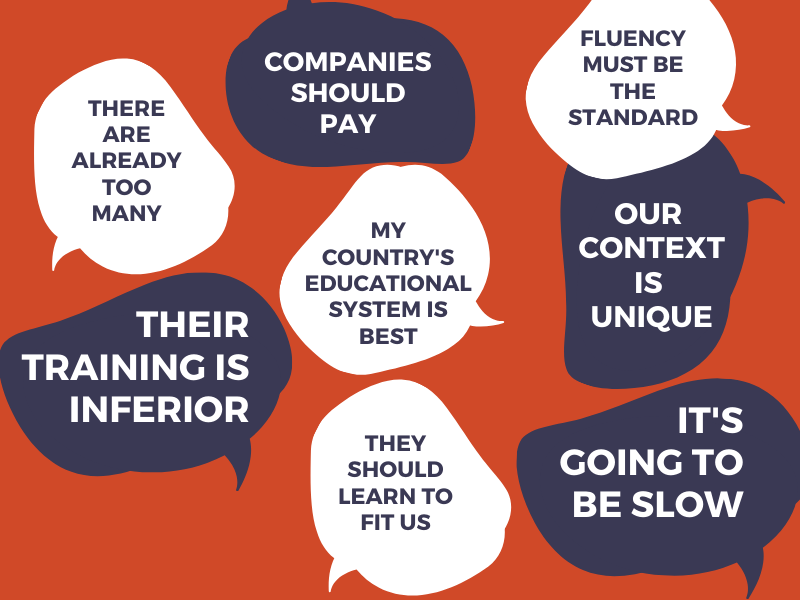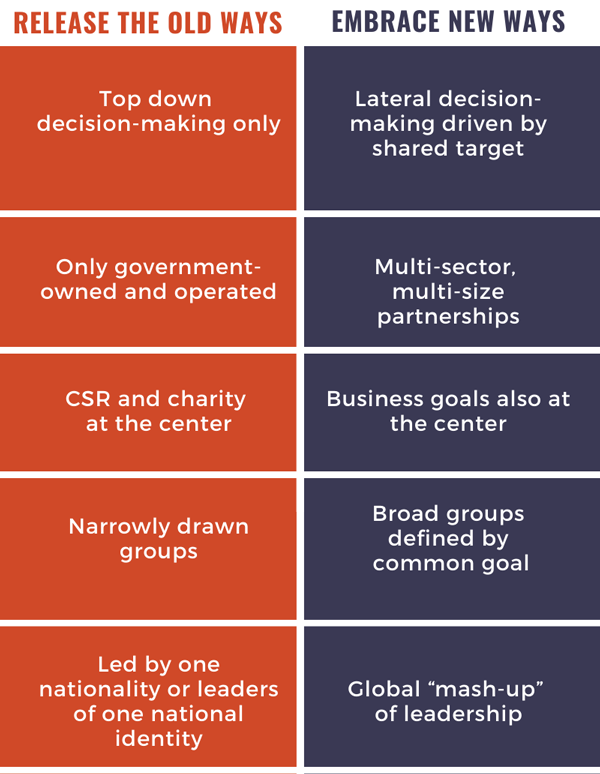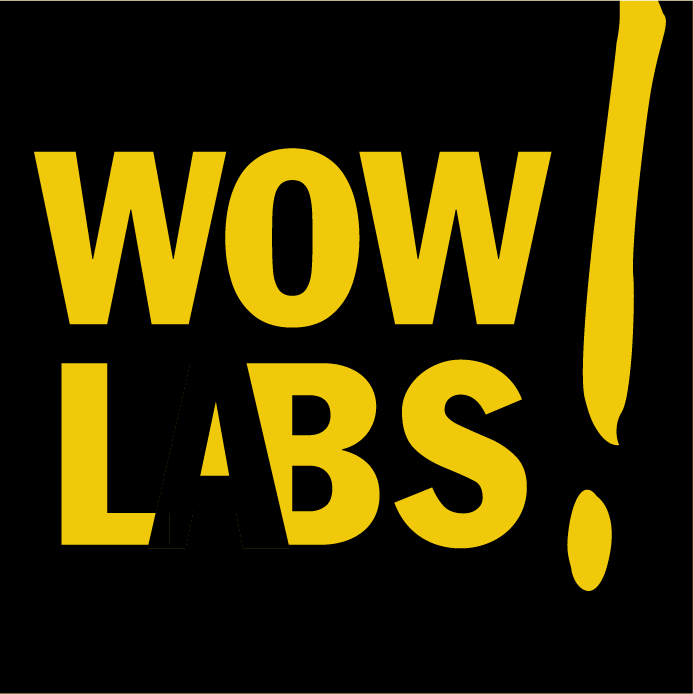Reading Time: 5 minutes
This is a powerful moment. Larger youth and ageing populations, globalization and migration, from country to country, city to city and rural to urban, will be some of the most important factors affecting the way we work in the future. We believe we must stop planning our policies and strategies around fitting workers into the way our systems operate today, and start designing for the way that we want to work tomorrow. Labor markets, workforces, and workplaces need a full-scale redesign.
Economies, institutions and individuals around the globe have much to gain from creating the future of work, and much more to lose if they see themselves as victims of it.
Economies, institutions and individuals around the globe have much to gain from creating the future of work, and much more to lose if they see themselves as victims of it.
Work is a way we take part, every day, in something bigger than ourselves. Work brings us into a relationship with others around shared responsibility and shared goals. The workplace is a great integrator, helping people and institutions value each other’s contribution, beyond age, gender, nationality, ethnicity, religion or value system.
Building new systems for work is an opportunity for us to envision how citizens can experience and create belonging in our societies. New structures for work and new ways of working can and should bring new ways of belonging, as automation increases and more time is spent interacting with machines, including the demanding small ones in our pockets.
New structures for work and new ways of working can and should bring new ways of belonging, as automation increases and more time is spent interacting with machines, including the demanding small ones in our pockets.
The way we build systems that integrate underutilized, high potential, invisible segments of the workforce will determine success for us all in the work of the future. Underutilized segments like refugees and immigrants represent extreme cases of attributes that we all increasingly share: non-linear career paths, forced mobility, and the necessity to reinvent ourselves in order to thrive.
An opportunity to design work for everyone
As a society, we have an opportunity to design for people working longer and more prosperously, since we are ageing healthier.
We can design for the families we have and want to have, for working while taking care of children and elderly family members, often at the same time.
We can design for our desires and our needs to cross borders for work, to work in foreign places and to work with foreign places from home.
We have the chance to imagine one person with multiple careers over a lifetime, enjoying the satisfaction that comes from learning new things, from working, self-study, volunteering, parenting.
We can design for women’s participation and leadership. We can even design for embracing leadership that is not defined by gender.
We can value more ways to learn in the future, and not only through formal credentialing and formal work experience, as it is prioritized today.
We can even design for work that encourages people to belong and doesn’t force us into isolated corners, staring at our phones.
Let us focus on migrants, youth, older workers, parents, border-crossers, life-long learners and human beings who need to be in community with other humans.
Our biases are the past of work
But there are significant hurdles on the way to re-designing work for everyone: our biases. We all have them, present authors included. Here are some of the biases that surround the integration of those considered outside of the standard workforce norms.

Creating the future requires us to challenge those biases, even if they worked for us, in our context, in the past.
Time to embrace new ways
There are many new ways of working that enable us to build what we need. Let’s release the old ways, and embrace the new.

These new approaches must become the new normal, if we are to succeed in creating a future of work that works for all.
There’s a wide open sky for multi-sector partnerships to start and scale.
We are in global R&D. Let’s think like R&D.
Re-designing work for the future can feel like we are driving at top speed and not sure where we are headed. Some days it feels as if we are careening off a cliff, as if we have lost control entirely.
But this collision course with the future also means we are free to imagine and test new ways of work, to iterate old ways of work, to take things that work at small scale and scale them. Let’s talk more about what we are trying and learning, instead of what worked in the past. Governments tend to excel at scaling pilots into national programs. They need more partners in piloting new approaches.
Job creation and expanding job opportunities for all types of profiles, comes from focusing on a true business need and making it transparent to the market.
Let’s raise the bar for best practices. A best practice should be sustained and scaled multi-sector programs, products, services, and policies that impact – not just reach, but impact – millions with a tangible outcome of a job or a hire or a business need met. That is the standard we should hold for a best practice. From where we authors stand — in the field for two decades and advising many start-ups engaged in defining the future of work and migration — we don’t believe the field is there yet. That’s okay.
There’s a wide open sky for multi-sector partnerships to start and scale. We need the private sector to identify true business needs so that companies and social enterprises can create services and products filling those needs that will scale themselves, sustainably, through the market. Job creation and expanding job opportunities for all types of profiles, comes from focusing on a true business need and making it transparent to the market.
Designing the future of work is exciting, and there is so much yet to be imagined. To fully embrace the R&D moment we are in, we must leave our biases and old ways of thinking behind.
There’s also opportunity to leverage the leadership of mayors and country-level administrations. The private sector can help the public sector understand these true business needs and create partnerships that harness value in practice and equity for all those involved.
Designing the future of work is exciting, and there is so much yet to be imagined. To fully embrace the R&D moment we are in, we must leave our biases and old ways of thinking behind. Are we ready?
Charlotte Hochman is the Co-founder & Director of Wow!Labs, an innovation studio that creates results for companies, cities and universities by developing human capacity and physical spaces for innovation. She co-founded PLACE, a European project that experiments solutions linking talent, migration and the economy.
Jane Leu is CEO of Smarter Good, a global services firm working to create new ways of getting work done across geographies. She is also the Founder of Upwardly Global, a 20-year old award-winning organization that exists to build a strong, diverse workforce prepared to compete in the global marketplace.


